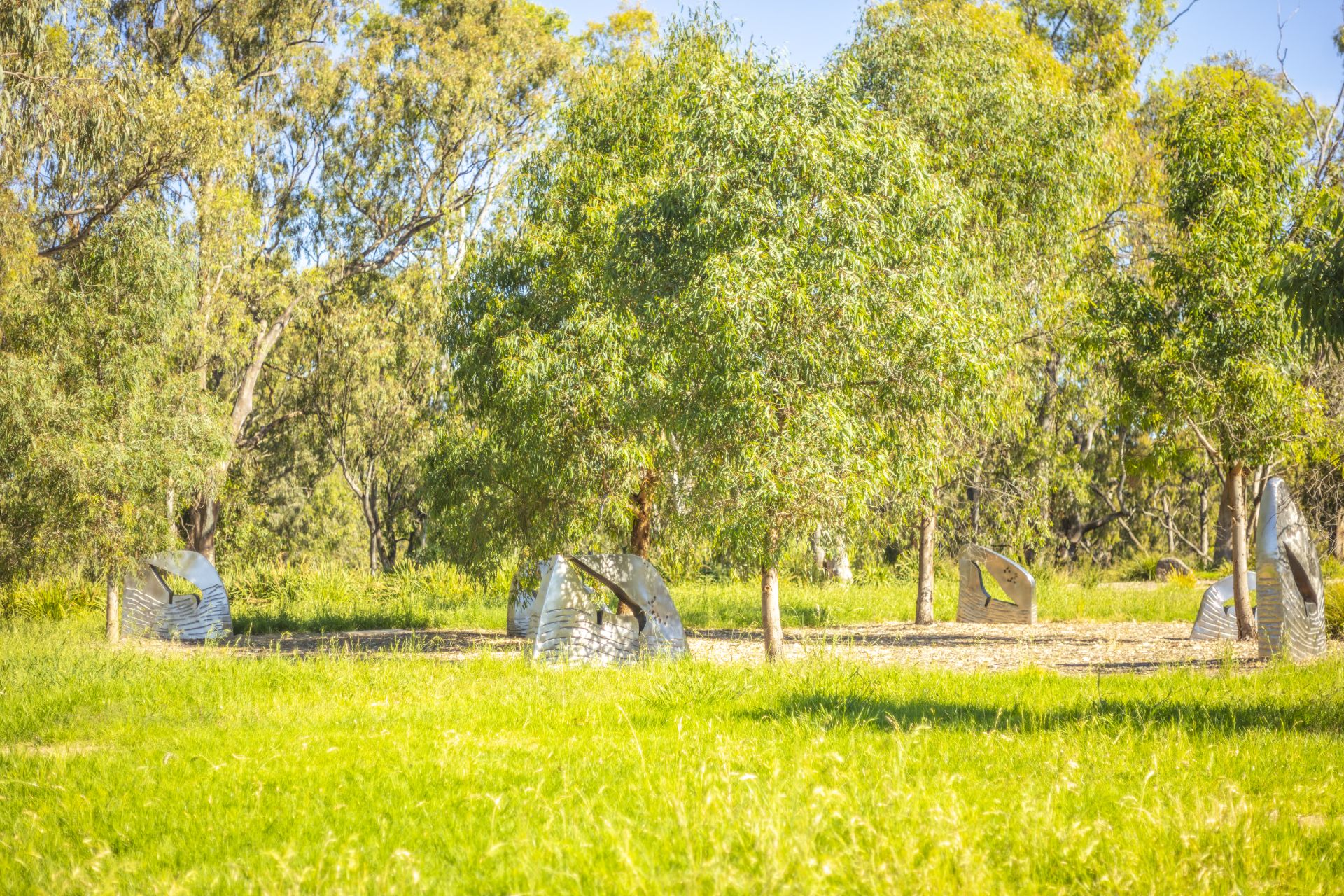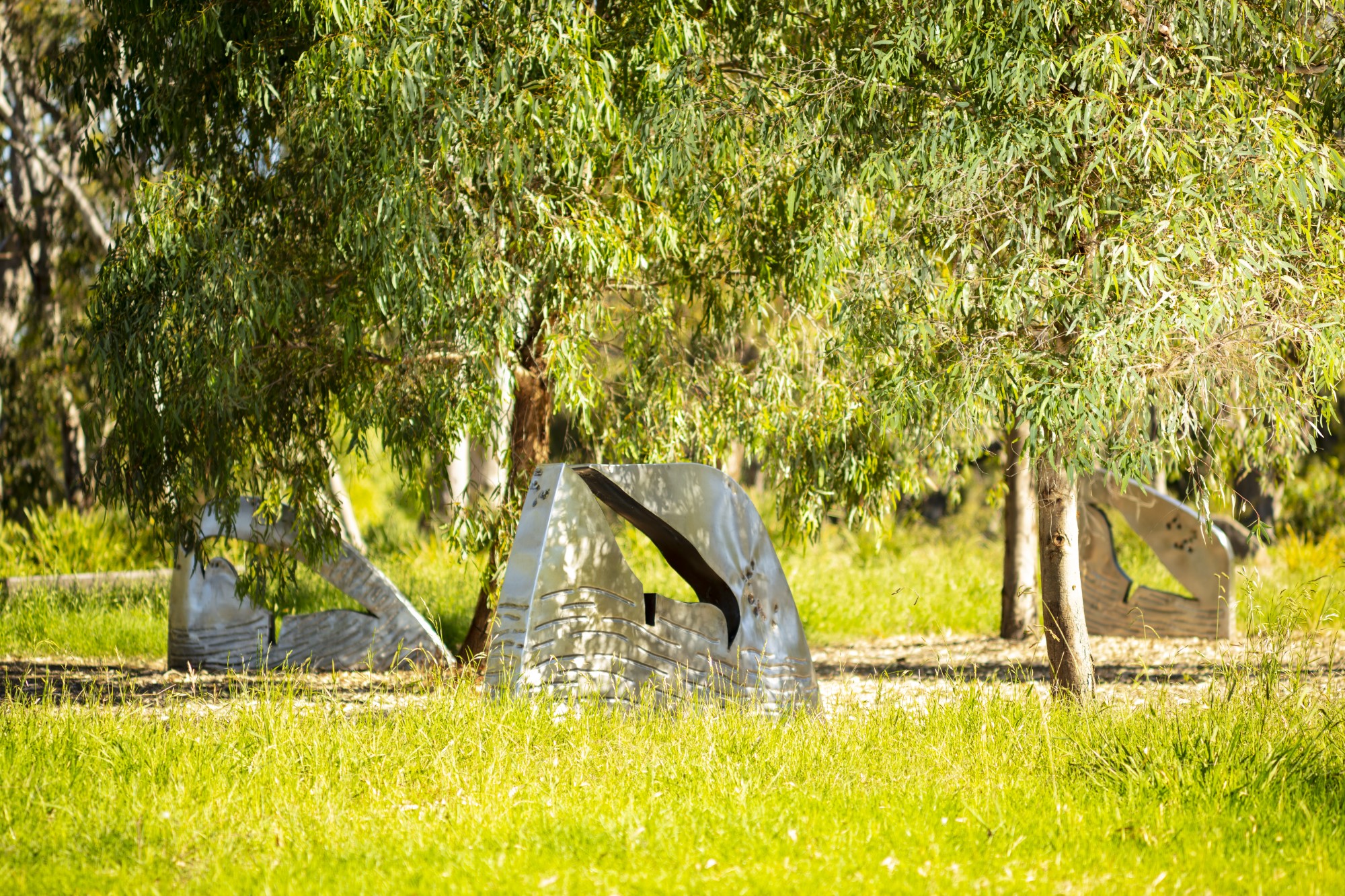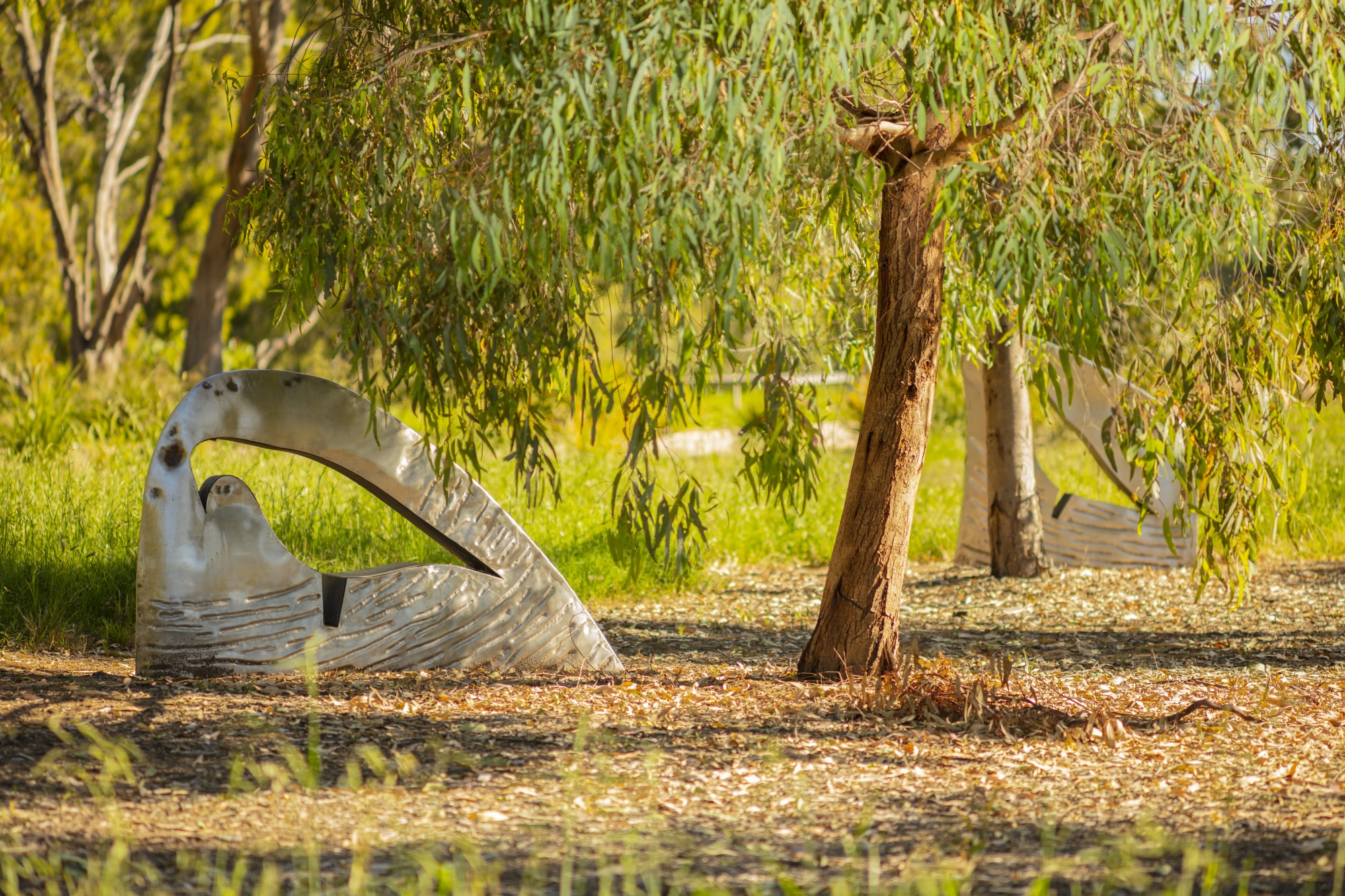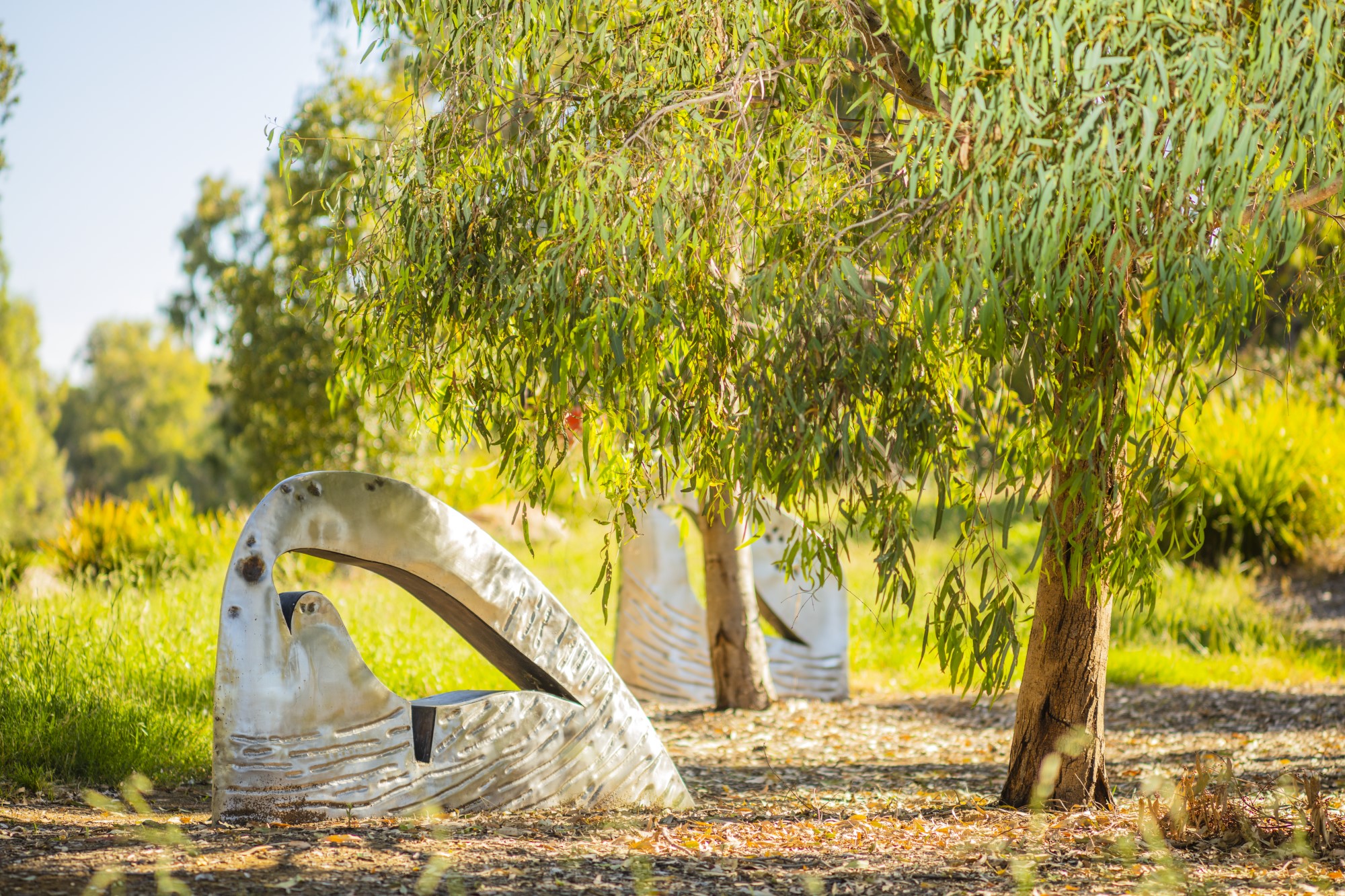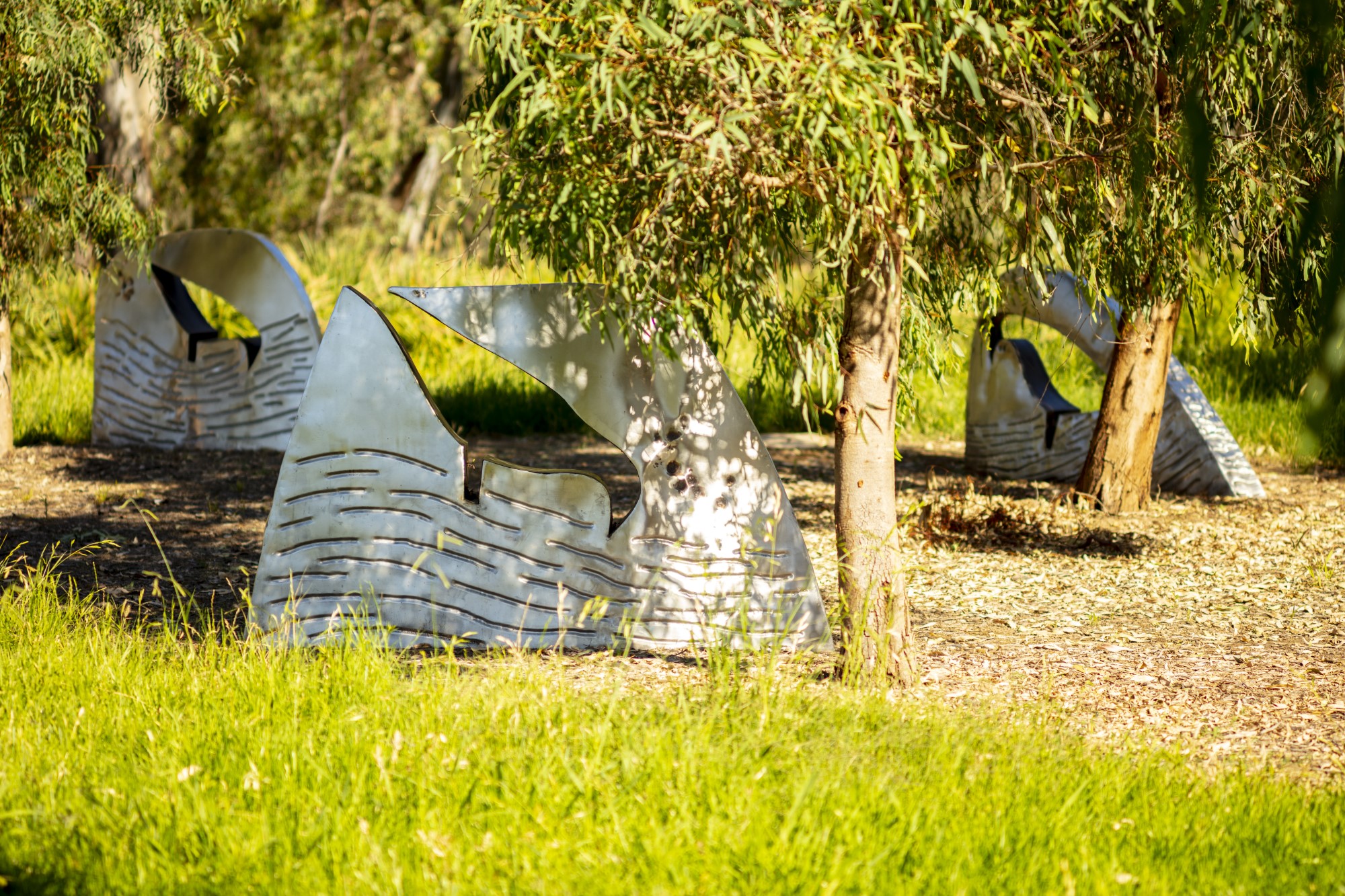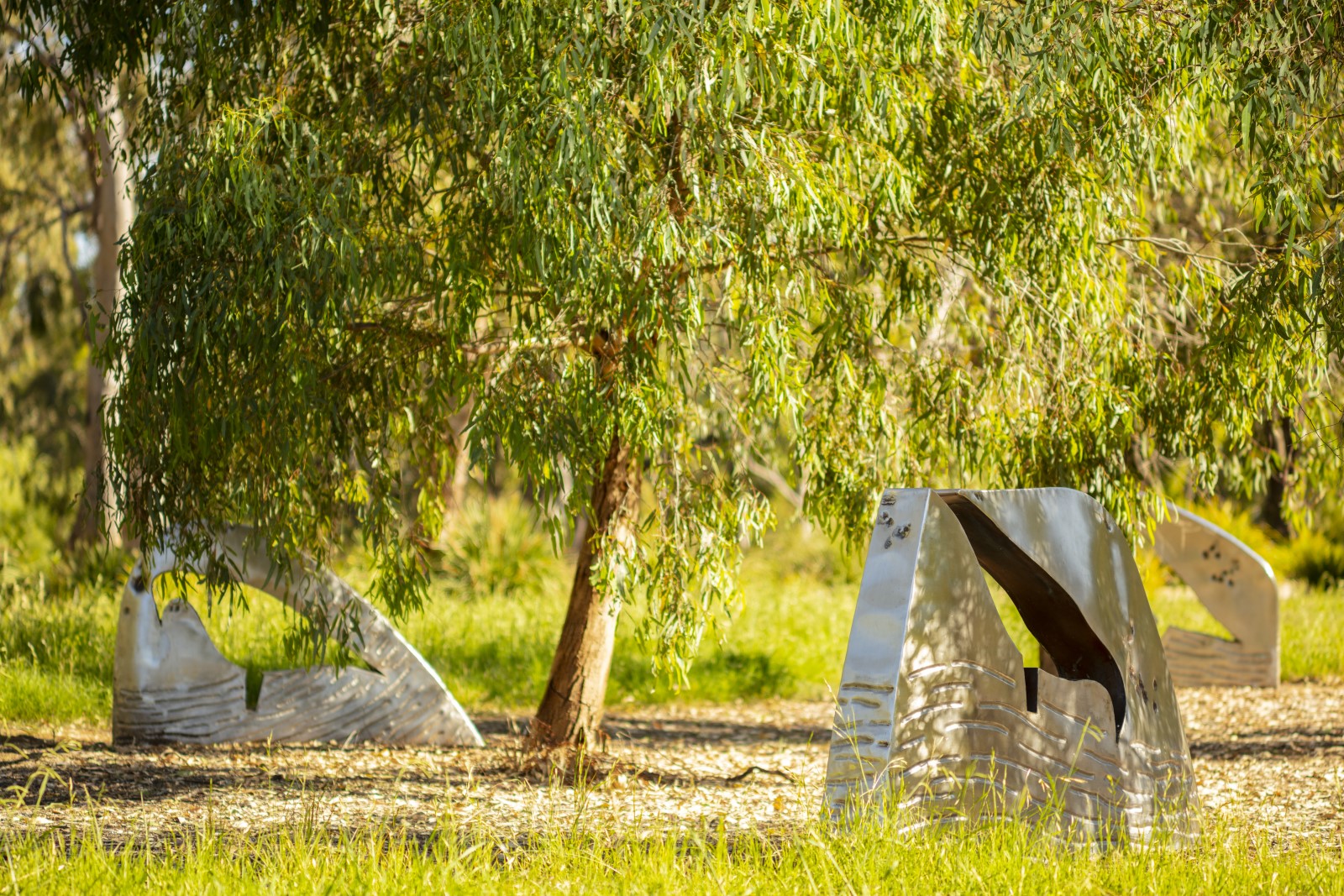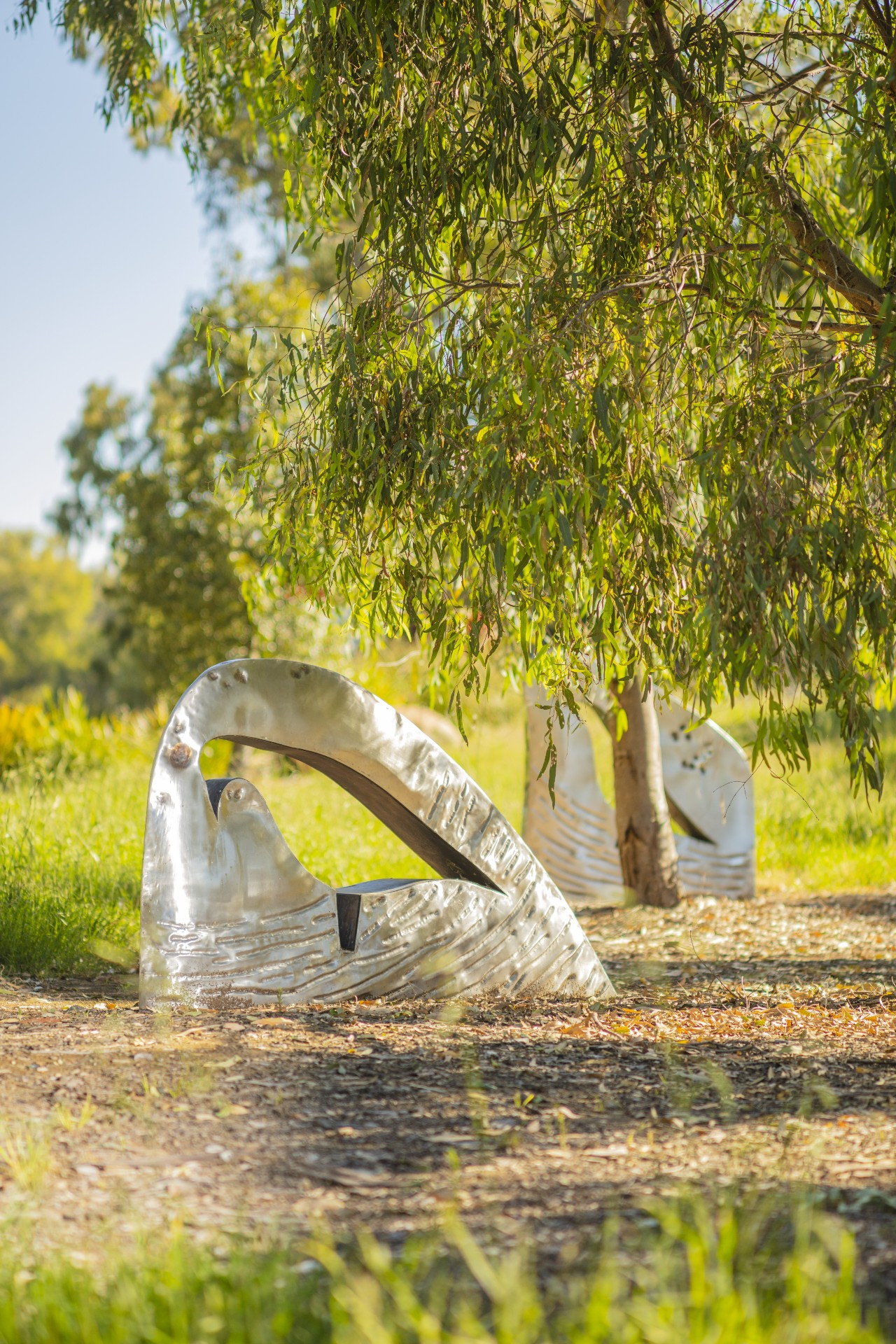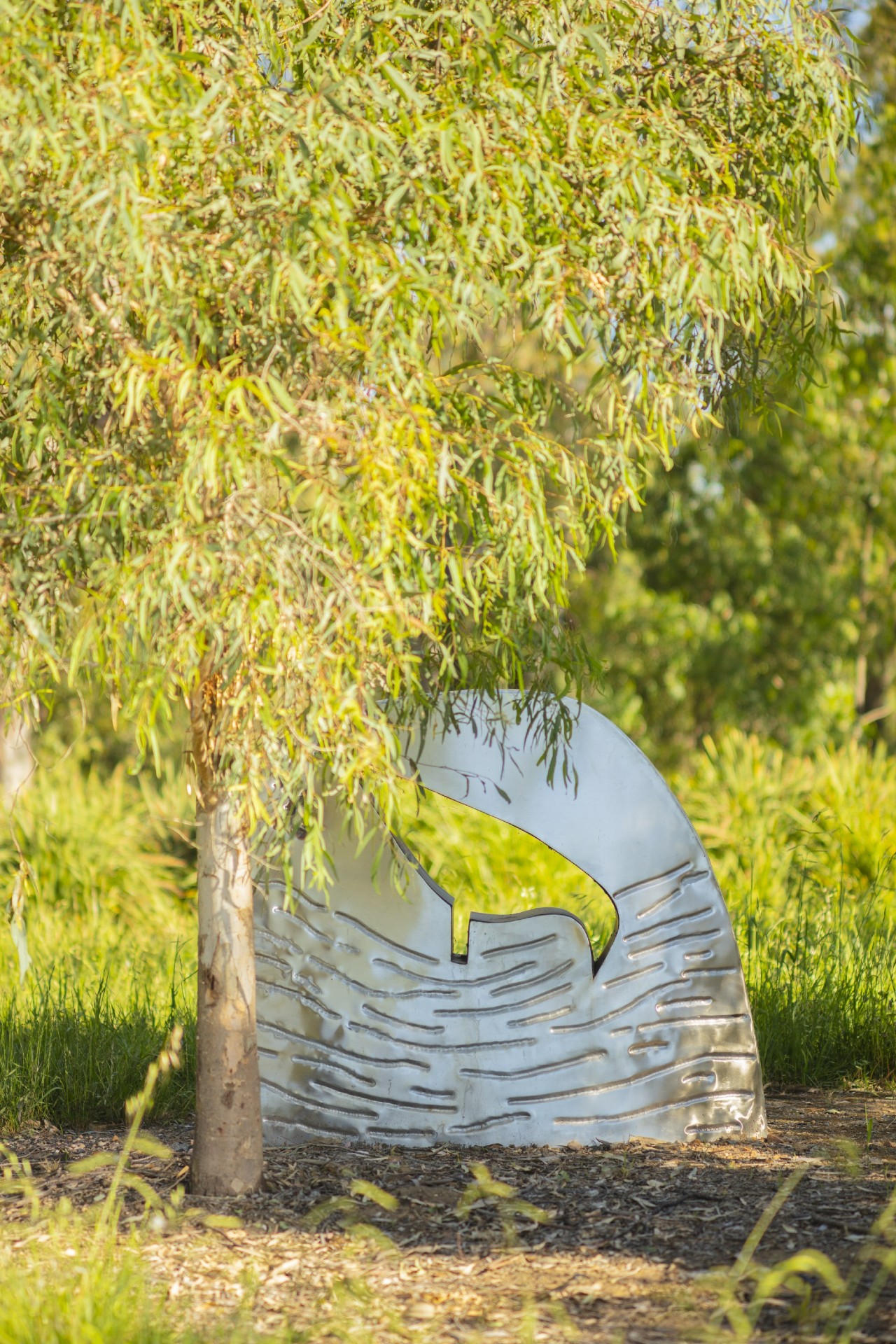Stainless steel
Riverside: Wagga Beach Precinct, Wagga Wagga
Public Art Audio Trail
Episode 1: Stone Crows
Audio visual description:
Acknowledgement spoken by Bernard Higgins.
Narration, content and interview by Ashleigh Adams.
Sound and music by Sam Webber Sound.
Public Art Audio Trail - Episode 1 Transcript - Stone Crows
Our first stop along the Wiradjuri Trail is the sculpture titled ‘Stone Crows’ by artist Jane Cavanough. These six crows are dotted amongst shady gum trees. One of them stands as a lookout while the other five scratch around for food in the bark.
Jane Cavanough’s crows appear as hollow shapes inside metal boulders, framing the scenery around them. Depending on how you look through the sculptures, you’ll see a different part of the beautiful river landscape fall into the frame. The metal boulders also reflect little fragments of their surroundings, capturing the sway of trees and the sunlight overhead across their surface.
Now let’s hear from the artist Jane Cavanough about this artwork:
Narrator: What inspired you to depict crows in the artwork?
Jane: I was walking along the Murrumbidgee River looking for ideas and observing the environment, I knew that the work was to be located along the river, but I didn’t know which form it was going to take or where it would be located, and as I was walking along I was followed by a family of crows and so I thought that what a lovely symbol to use in the artwork it just seemed very appropriate that this family of crows was living alongside the river. The other thing that I was very taken with are the igneous boulders along the river, those beautiful, rounded shapes, that was something I knew that I wanted to work with and so therefore it then became a process of combining the shape of an artwork that was inspired by the boulders with the crows.
Narrator: This location is a fabulous place for a public artwork, how did this inform the design of the work?
Jane: Well I wanted the river to be embedded in the artwork, I wanted the artwork to have a connection with the landscape and the trees and the wildlife, so it was very much about choosing a location that had gravitas with the trees and the rocks and the connection with the river. The design was also very much about making it floodproof. The crow cut out meant that water could flow through the work when the river floods and if you are looking from above its actually each piece is shaped like a boat enabling the water to flow easily around the work, so it is designed for water to flow through it and around it.
Narrator: There is a lot about this work that invites people in to look closer and interact with the sculptures, can you tell me about how you design a public artwork that will engage people walking past?
Jane: This work was very much about creating a piece that could be walked around, that could be touched, that connected with both the earth and trees that are planted around it. I also decided to cut the shape out of the crows so that the crows become a negative space, embedding that as an integral theme that connects with the landscape so that you are seeing the cutout crow through the landscape so it becomes part of the landscape.
The crows have joined the landscape alongside the Murrumbidgee River which has been a place for celebration and exchange for the traditional owners of the Wiradjuri Nation for thousands of years. The name Wagga Wagga was derived from the language of the Wiradjuri people and at the time of this commission it was understood to mean ‘place of many crows’. The Wiradjuri community have since agreed that Wagga Wagga comes from the word ‘Waga’ meaning ‘a place to dance’. The repetition of a word expresses plural or emphasis, emphasis meaning special importance. Thus, Wagga Wagga is now understood to mean ‘a place of many celebrations or a place of many dances’.
Beyond Stone Crows is the Riverside: Wagga Beach Precinct – one of our city’s top attractions for locals and visitors. The riverside precinct is abundant with things to see and do and continues to act as a place of celebration and exchange. Here you can discover ‘The Meeting Place’, relax with a picnic on the grass or enjoy the playground. As you follow the pathways through the precinct, they will lead you up to the levee bank where the public art trail continues.
Visual Description
Six stainless steel sculptures are sitting in a park on clear ground surrounded by grass. There are six slim gum trees growing amongst them. Each sculpture sits on a flat base and is a semi-oval, approximately one meter wide, that has been stretched out of shape - resembling boulders. Their heights range from 75cm high to 1.2m and they are approximately 30cm deep.
A crow shape has been cut out of the middle of each piece of metal and below the crow shape short horizontal lines have been scored into the metal. On the left, three sculptures form a triangle — the shortest one at the apex shows a crow, head down and tail up; the tallest one on the left side has the crow in the same position and in the solid metal beside the head are several round indentations. The crow in the third sculpture is standing upright, neck extended slightly forward. This piece also featured indentations to the top of the crow cutout.
The other three sculptures also form a triangle, each of them are about one meter tall and all have indentations in the solid metal above the cut outs. The piece furthest to the right is spaced about 10 meters from the others. The piece in line with the tallest sculpture has the crow’s head down and tail up; the crow across the way has the crow looking down at the ground; and the sculpture at the apex of this triangle has its head dipped down and the tail in the air.
Explore the Trail
This artwork is a part of the Public Art Audio Trail, follow the link below to see all the artworks on the trail.
About the Artwork
Wagga Wagga City Council commissioned artist Jane Cavanough in 2014 to create a site specific installation at a riverside location. Jane was inspired by the murder of crows that followed her when walking along the river pathway and the flow of the Murrumbidgee. The artwork consists of 6 crows within a boulder shape that echo the granite boulders along the Murrumbidgee River. The artwork was designed to withstand the floods of the Murrumbidgee River with the crow silhouettes allowing water to flow through and around the artwork.
Jane Cavanough produces site specific public art that is a union of both classic and contemporary design, interactive, low maintenance with long lasting beauty. Jane has degrees in both Landscape Architecture and Visual Arts and her strength is creating artworks that have a strong relationship to the site in urban, architectural and landscape settings.

